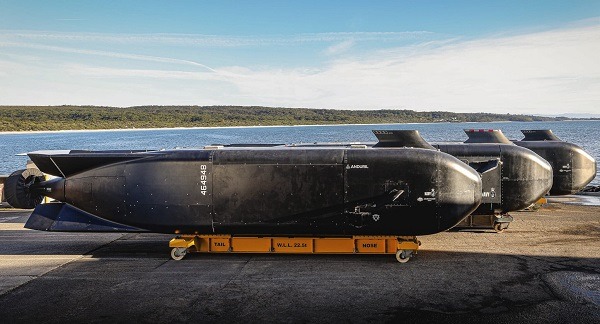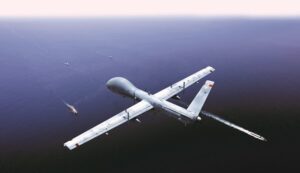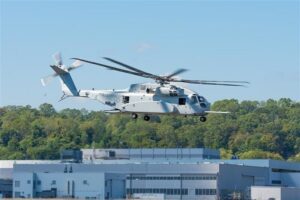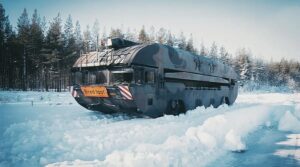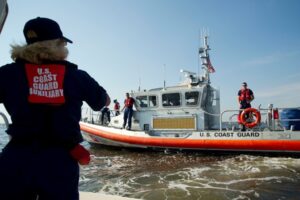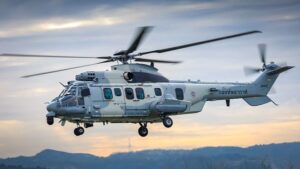From prototype to fleet in three years
Around the world, navies are grappling with how autonomy will reshape undersea warfare. Few have acted decisively. The Royal Australian Navy has, moving from concept to production of the Ghost Shark SSK, an extra-large autonomous submarine, in less than three years. Today, the Navy awarded Anduril Australia a A$1.7B (US$1.12B) Program of Record to deliver a fleet of Ghost Sharks, with production already underway.
The Ghost Shark program is the direct outcome of a bold decision by the Royal Australian Navy to take on shared risk in pursuit of speed and capability. Rather than relying on traditional defense acquisition, the Navy co-developed and co-funded Ghost Shark with Anduril, committing significant financial and bureaucratic capital to the success of the program.
The reason for the magnitude of risk-taking in this enterprise is clear: the Ghost Shark’s entry into full-rate production marks the start of a new era of seapower through maritime autonomy. For years, Australia has faced the persistent and threatening presence of Chinese naval assets in its home waters. Ghost Shark is the instantiation of a Program of Record for AUVs that can directly address this challenge through coastal defense patrols and area-wide domain awareness powered by artificial intelligence at scale. Success in this effort would be a landmark opportunity to demonstrate the potential of autonomous seapower to address clear and urgent national security problems.
Beyond what Ghost Shark will do to protect Australian seas, the program opens the door for other nations to follow suit – such as the United States and its allies – in deploying autonomous seapower at relevant scale with unprecedented affordability, against a relevant timeframe, and through clear operational concepts.
There are also significant lessons to apply in industrial innovation. The Royal Australian Navy embedded their people into Anduril processes and allowed Anduril to do the same in theirs – creating true collaboration at every stage. For example: Anduril team worked out of the naval bases alongside Navy personnel, with shared access and time on base enabling joint testing and capability development. The result is a model of success that should be considered in other key programs. Simply put, overhauling the entire system isn’t required to achieve progress – but creative, decisive leadership is. Anduril is demonstrating that affordable, high-performance undersea mass is achievable in just a few short years – not decade-long planning and budgetary cycles.
For Anduril part, getting this right required taking a significant risk in the development of Ghost Shark. Months before securing any formal engagement with government partners, Anduril expended its own capital to acquire Dive Technologies, an AUV startup, recognizing the potent combination of Anduril’s software and Dive’s design could bring forth. In just over two years from acquisition, Anduril had delivered an entirely novel AUV prototype derived from its acquisition of Dive. Today Anduril has extended even further from Dive-LD and Dive-XL to effectors and distributed sensors – all evolving from a common core. Now Anduril intend to build: Anduril has invested $60M in a sophisticated, robotic XL-AUV manufacturing facility in Australia, where employees are at work to produce entirely sovereign autonomous maritime platforms.
Anduril shared endeavor to build Ghost Shark proves what’s possible when urgency, innovation, and partnership come together. The future of undersea warfare doesn’t have to be slow, cumbersome, or exquisite. The free world can own the battlespace beneath the waves – if we can command the sea, we command the world.

